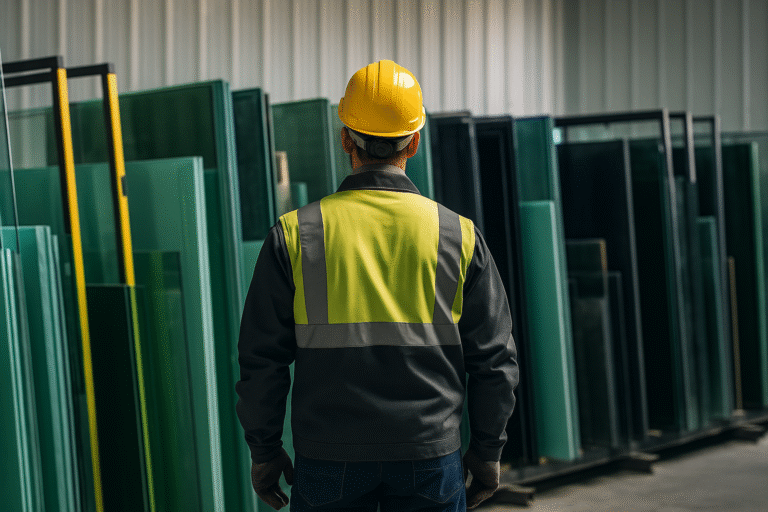
Compare Window Glass Types: Which Should You Choose?
Choosing the right glass type for your doors and windows isn’t just about what looks best—it’s a decision that significantly impacts your home’s energy performance, indoor comfort, noise insulation, safety, and even your monthly utility bills. From modern condos to older Edmonton homes, the right glass choice can improve your property value and reduce long-term maintenance costs. Each type of window glass offers different features tailored to specific environments and needs, whether you’re dealing with harsh Canadian winters, looking for enhanced soundproofing in a busy neighborhood, or prioritizing shatter resistance for safety.
This comprehensive comparison guide is created by Doors Glass Replacement in Edmonton to help you understand the core differences, features, pros and cons, and use cases of each material. Our goal is to make it easy for you to confidently compare window glass types and select the ideal option for your residential or commercial space. We’ve broken down each type by function, cost, and performance—so you can make a smart, future-ready investment.
Why It’s Important to Compare Window Glass Types
In a dynamic city like Edmonton, where weather patterns can swing from bitterly cold winters to humid summers, the quality of your window glass plays a major role in your overall indoor comfort. One of the most overlooked aspects of home improvement is selecting the right type of glass based on your local climate, energy needs, and property type. Choosing poorly could lead to higher heating and cooling bills, less protection from UV rays, and even reduced security.
Whether you live in a downtown high-rise or a suburban home, it’s essential to compare window glass types thoroughly to make sure you're getting the best value and performance for your needs. From basic float glass to advanced Low-E or triple-pane options, every type offers different levels of insulation, light transmission, and safety features.
For instance, if you're looking to cut energy costs and reduce your carbon footprint, glass with a low-emissivity (Low-E) coating might be your best bet. Meanwhile, homes in high-traffic areas could benefit from laminated or double-pane glass that offers superior soundproofing. In fact, organizations like the Government of Canada’s Energy Star program even encourage upgrading to energy-efficient windows to improve sustainability.
Taking time to properly compare window glass types is more than just a smart financial move—it’s a long-term investment in your home’s safety, comfort, and efficiency.
Glass Comparison Table
| Glass Type | Pros | Cons |
|---|---|---|
| Tempered Glass | Extremely strong; safe shatter behavior | More expensive than basic glass |
| Laminated Glass | Great soundproofing and security | Heavier and pricier to install |
| Double-Pane Glass | Highly energy efficient | Higher upfront cost |
| Triple-Pane Glass | Superior insulation and noise control | Very expensive and heavy |
| Low-E Glass | Reflects heat, UV protection | Slightly higher cost |
| Tinted Glass | Privacy and glare reduction | May block natural light |
| Float Glass | Affordable and easy to cut | Fragile and less secure |
Use Cases by Glass Type
Let’s compare window glass types based on where they perform best:
- Tempered Glass: Entry doors, patio sliders, high-traffic areas
- Laminated Glass: Storefronts, balconies, homes near highways
- Double-Pane: Suburban homes, apartments, green upgrades
- Triple-Pane: Northern climates, energy-conscious households
- Low-E: Rooms with direct sunlight, energy savings
- Tinted Glass: Conference rooms, bathrooms, sun-facing facades
- Float Glass: Interior partitioning, non-load-bearing windows
Factors That Influence Glass Prices
When comparing window glass types, cost is a major factor. Here’s what influences pricing:
– Glass treatment (tempering, laminating, Low-E coating)
– Pane layers (double/triple-pane)
– Glass thickness and dimension
– Labour and installation difficulty
– Framing and energy performance requirements
Price Estimates (per sq. ft.):
– Float Glass: $5–$10
– Tinted Glass: $8–$20
– Tempered Glass: $12–$25
– Laminated Glass: $15–$30
– Double-Pane Glass: $20–$50
– Low-E Glass: $25–$55
– Triple-Pane Glass: $35–$70
Tips to Help You Compare Window Glass Types Better
Still unsure which one suits your project? Here’s how to narrow it down:
– Go for tempered or laminated glass if safety is your concern
– Choose Low-E or triple-pane for energy savings and climate control
– Use tinted glass for privacy and UV reduction
– Stick with float glass for budget-friendly indoor partitions
Learn More from Our Experts
Visit our Glass Tips & News Blog for more guidance or explore Window Glass Replacement Services to get a quote.
Need Help Choosing the Right Glass?
Our experts at Doors Glass Replacement help homeowners across Edmonton compare window glass types and choose the best solution for energy efficiency, safety, and noise reduction.
Fast service. Trusted installation. Guaranteed quality.

